GRP vs. GRV vs. GRE Pipes: How to Choose the Best Pipe?
In the piping world, there are tons of pipes, whether polymer-based or metal-based. Each represents a completely different area, as in glass-reinforced piping types, GRP or glass-reinforced plastic pipes are the most famous ones. But what about Glass Reinforced Vinylester (GRV) and Glass Reinforced Epoxy (GRE)? Are these names familiar?! How are they related to piping lines?
GRP, GRV, and GRE pipes are all made of fiberglass-reinforced composites, but they differ in the type of resin matrix used. The resin matrix used in GRP is isophthalic Polyester, in GRE epoxy resin, and in GRV is vinyl ester. Each shows a specific performance based on their resin matrix. For instance, GRP is mainly used for potable water, and GRE is perfect for high-pressure and thermal-resistant conditions like oil and gas pipelines.
In this article, we’ll explore the FRP world by getting to know and comparing GRP, GRE, and GRV to aid you in choosing the best.
Understanding Composite Pipe Types
GRP, GRV, and GRE are covered under an umbrella called FRP, a term for plastic composite materials. This trio includes two main parts: a glass-reinforced part and a resin base. Depending on the resin matrix, the performance of each could be unique:
GRP (Fiber + Polyester): Glass-reinforced plastic uses isophthalic resin to show resistance against corrosion and high-pressure water flow, especially in potable water and sewage systems.
GRV (Fiber + Vinylester): Glass-reinforced vinylester uses vinyl ester resin instead of plastic to emphasize resistance in chemical and harsh environments like industrial chemical pipelines.
GRE (Fiber + Epoxy): Glass-reinforced epoxy containing epoxy resin is ideal for oil or gas pipelines due to its high strength and chemical resistance. (Source: StrongWell)
Material Composition & Fabrication Improvement
Through the combination of primary materials with fabrication techniques, GRP, GRV, and GRE pipes appear in various roles of piping. Here, core materials, performance boosters, and the role of each are explained.
Core Materials: Fiberglass + Resin Matrix
The composite structure of GRP, GRE, and GRV includes a fiberglass base with a thermosetting resin matrix.
Fiberglass: Normally, E-glass or S-glass shapes a high-strength structure, while resin matrix performs a binder role in pipes and increases the resistance in harsh environments.
Resin Matrix: Whether isophthalic Polyester, epoxy, or vinyl ester, each creates a part for corrosion resistance, temperature, and pressure tolerance in lightweight structural piping in comparison with steel pipes.
Role of Resins in Durability and Chemical Resistance
Each of these resin matrixes may show a specific performance in pipelines. Below, a comparison table will present how they shine in corrosive conditions.
| Resin/Pipe Type | Corrosion Resistance | Key Applications | Fire Resistance |
|---|---|---|---|
| Isophthalic Polyester (GRP) | Good (water, mild acids, alkalis) | Potable water pipe materials, sewage systems | Moderate |
| Vinyl Ester (GRV) | Very High (acids, solvents, wastewater) | Industrial chemical piping, marine-grade pipe systems | Good |
| Epoxy (GRE) | Excellent (harsh chemicals, oils) | Oil and gas pipeline materials, high-pressure pipeline solutions | Excellent (self-extinguishing) |
Performance Boosters
To create sophisticated properties for operational requirements, manufacturers provide a wide range of boosters in pipelines, as we mentioned below:
- Phenolic Resin for High-Temperature Resistance: Standard resins show moderate resistance against fire. However, phenolic resin contains a perfect tolerance at high temperatures up to 3000°C. This will be used for pipelines in oil and gas or chemical plants.
- Carbon/Graphite Fibers for Conductivity: To increase electrical conductivity, carbon or graphite fibers are added. This can build up a base for fuel or chemical transportation applications.
- UV Inhibitors for Outdoor Applications: UV inhibitors are mainly added to the resin matrix to avoid ultraviolet degradation in above-ground installations or exposed environments. This may play a crucial role in marine-grade pipe systems.
Detailed Performance Comparison of GRP, GRV, and GRE Pipes
Below is a comprehensive table that compares these three pipes through various components, such as resistance against pressure, corrosion, or fire.
| Attribute | GRP | GRV | GRE |
|---|---|---|---|
| Resin Type | Isophthalic Polyester | Vinyl Ester | Epoxy |
| Max Temperature (°C) | 60 | 90 | 110 |
| Corrosion Resistance | High (effective against water, mild acids, and alkalis) | Very High (resists acids, solvents, and corrosive wastewater) | Excellent (superior resistance to harsh chemicals and oils) |
| Pressure Resistance | Medium to High (up to 25 bar, depending on design) | High (up to 20 bar, suitable for most industrial applications) | Very High (up to 30 bar, ideal for high-pressure systems) |
| Fire Resistance | Moderate (requires additives for enhanced fire performance) | Good (better inherent fire resistance than GRP) | Excellent (self-extinguishing properties due to epoxy resin) |
| Electrical Conductivity | Non-conductive (can be modified with carbon/graphite fibers) | Non-conductive (can be modified with carbon/graphite fibers) | Non-conductive (can be modified with carbon/graphite fibers) |
| Mechanical Strength | Good (suitable for general applications) | Very Good (improved strength for demanding environments) | Excellent (superior tensile and impact strength) |
| Weight vs. Steel | ~30% lighter (reduces transportation and installation costs) | ~30% lighter (comparable to GRP in weight savings) | ~30% lighter (optimized for high strength-to-weight ratio) |
| Installation Ease | Moderate (requires careful handling and jointing) | Moderate (similar to GRP but may need specialized fittings) | Easier (due to stronger joints and compatibility with various systems) |
Use Case Scenarios for GRP, GRV, and GRE Pipes
FRP pipes are designed in a way to fulfill numerous applications like potable water or sewage systems, ship ballast systems, or mechanical transportation. Now let’s dive into the use cases of these pipes:
GRP Pipe Use Cases: According to What is Piping, Due to cost-effectiveness and corrosion resistance, GRP pipes are used in water supply systems, sewerage systems (handling corrosive wastewater), and ballast water systems in marine vessels.
GRV Pipe Use Cases: Via using vinyl ester resin, this kind of pipe is perfect for industrial piping, chemical processing plants, and wastewater treatment where corrosion resistance in harsh conditions is required.
GRE Pipe Use Cases: Epoxy resin base in GRE provides a utility for oil and gas pipelines, marine applications, and desalination plants where fire resistance and pressure tolerance are key properties of pipes.
Pipe Fittings & Jointing Systems for GRP, GRV, and GRE Pipes
Grp, GRV, or GRE, there is no difference; pipe fitting and jointing systems are crucially needed for each to create such a leak-proof and durable connection system as well.
Standard and Custom Fittings
Composite pipes are connected through specific fittings to shape several designs. Also, these fittings should be mastered by corrosion resistance, mechanical strength, and lightweight properties.
For instance, Elbow fittings are used for changing the direction, while tees are critical in water treatment uses. Reducers are designed to connect pipes with different diameter sizes to control the liquid flow.
Moreover, flanges and couplings are mainly utilized for detachable connections or connecting two pipe ends to ease the installation or maintenance.
Joint Types
Joint types include several types for every existing pipeline, whether plastic or steel pipes. Flanged joints, which use bolts and gaskets, are commonly used in jointing systems. Other common joint types include:
- Flanged Joints: In aboveground installations and chemical piping like oil and gas, flanged joints are adapted to international standards (ANSI, DIN, BS) and provide a safe and easy connection.
- Butt & Wrap Joints: In large diameter size pipes (≥300mm), butt and wrap joints shape a laminated overlay of fiberglass and resin to boost durability in sewerage systems.
- Bell & Spigot Joints: Via connection of spigot and bell, this joint type is used in flexible underground potable water pipelines where easy installation matters the most.
- Double Bell Coupling: To join plain-ended pipes, this method is utilized in marine-grade pipe systems or fire-resistant pipe systems for quick assembly and thermal adaptation.
Lamination, Lining, and Composite Coatings
FRP composites not only are used in pipe fabrication but count as a reliable source for tank linings, ductwork, and coatings. For instance, GRP laminates can be used for steel pipes in water and sewer tanks to increase corrosion resistance over decades.
In aboveground pipelines, gelcoats (often epoxy or polyester-based) create a smooth and UV-resistant outer section in harsh conditions.
In the end, FRP was highly resistant due to composite construction, as lamination and outer coatings provide a safe pipeline for hygienic applications like foods or pharmaceuticals.
Installation Guidelines for GRP, GRV, and GRE
There are two major installation methods for pipelines, whether plastic-base or steel-base. Underground installation and aboveground installation are used in most projects based on their needs.
In Underground Installation, pipes are trench bedding in a sand or fine gravel base (a 10–15 cm bed), then they’re covered by layers of sand and soil to stay still over the years. These trenches are wide enough to keep them secure without any movements. (Source: ATM)
In Aboveground Installation, to hold pipes in place with no damage, there are supports every 3-6 meters, and applying coating and jointing based on resistance against fire and UV aids the process to achieve a durable pipeline.
Also, standardization of pipes, whether nationally or internationally, provides safe, high-quality, and well-tolerant piping. For instance, AWWA C950 for GRP pipes, ISO 14692 for GRE pipes, ASTM D2996 for design, and BIS IS 14402 for quality are used for more emphasis on the final quality!
Operational & Lifecycle Considerations for GRP, GRV, and GRE Pipes
In comparison with those old-fashioned metal pipes, GRP, GRV, and GRE pipes are recommended for applications such as chemical transportation, water and sewer systems, or food and beverage pipelines. Here are some main life cycle considerations of these pipes:
- Maintenance Frequency: Due to the excellence of coating and jointing methods for FRP pipes, they require less maintenance, which can decrease ongoing costs.
- Long-term Cost Savings: In aggressive environments such as wastewater treatment, desalination, or chemical processing, FRP pipes with high resistance to corrosion, temperature, and pressure reduce the cost and need for additional linings and coatings.
- Pumping Energy Efficiency: The smooth and uniform surface of FRP pipes on the inner side can reduce the cost and energy required for pumping.
- Service Life Expectations: After a safe lining, coating, and installation, it’s expected that pipes will remain in service for at least 50 years without requiring maintenance or with minimal maintenance requirements. For systems that require these characteristics, GRP, GRE, or GRV pipes are ideally used.
Decision-Making Framework for Selecting GRP, GRV, or GRE Pipes
A systematic evaluation will ease the way of choosing the best composite for your project. There are dozens of criteria to select the right one. Let’s break them down into steps, from destination environment to budget considerations.
- Operating environment: Indicate the destination environment, whether aggressive (offshore or chemical plants), moderate (wastewater), or good (water systems), to recognize the best one for an appropriate finish.
- Fluid type: Determine the fluid type (Water, acids, or hydrocarbons) to choose the right pipe. GRP pipe for mild fluids like water, GRE pipe for aggressive chemicals, and GRV acts against acids and wastewater.
- Check Temperature and Pressure Needs: The next level involves checking for high temperatures or pressure resistance. Consider that GRP supports up to 60°C/25 bar, GRV up to 90°C/20 bar, and GRE up to 110°C/30 bar.
- Installation method: Go underground (via bedding, backfill, bell & spigot joints) or aboveground (via bracing, fireproof cladding, and thermal expansion joints).
- Balance Budget vs. Performance: Consider that GRP is used due to its cost-effectiveness, while GRV shows moderate performance, and GRE shines in harsh conditions.
Conclusion
Selecting the best FRP pipes among GRP, GRE, and GRV depends on five main factors such as environment, fluid type, budget, and other properties. These three pipes are closely used in different industries based on the desired resistance. Whether in aggressive soils or water systems, GRP, GRV, and GRE provide lightweight resistance against corrosion, temperature, high pressures, and long service life. Understanding these factors will ease the way of pipe choosing!
FAQs
1- What are the main differences between GRP, GRV, and GRE pipes?
GRP, GRV, and GRE pipes all come from fiberglass-reinforced composites, but the thing that is changed in each is the resin base. The resin matrix used in GRP is isophthalic Polyester, in GRE epoxy resin, and in GRV is vinyl ester.
2- What are the primary applications for GRP pipes?
Due to cost-effectiveness and corrosion resistance, GRP pipes are used in water supply systems, sewerage systems (handling corrosive wastewater), and ballast water systems in marine vessels.
3- How do UV inhibitors benefit composite pipes?
UV inhibitors are mainly added to the resin matrix to avoid ultraviolet degradation in above-ground installations or exposed environments. This may play a crucial role in marine-grade pipe systems.
4- What is the expected service life of composite pipes?
After a safe lining, coating, and installation, it’s expected that pipes will remain in service for at least 50 years without requiring maintenance or with minimal maintenance requirements.

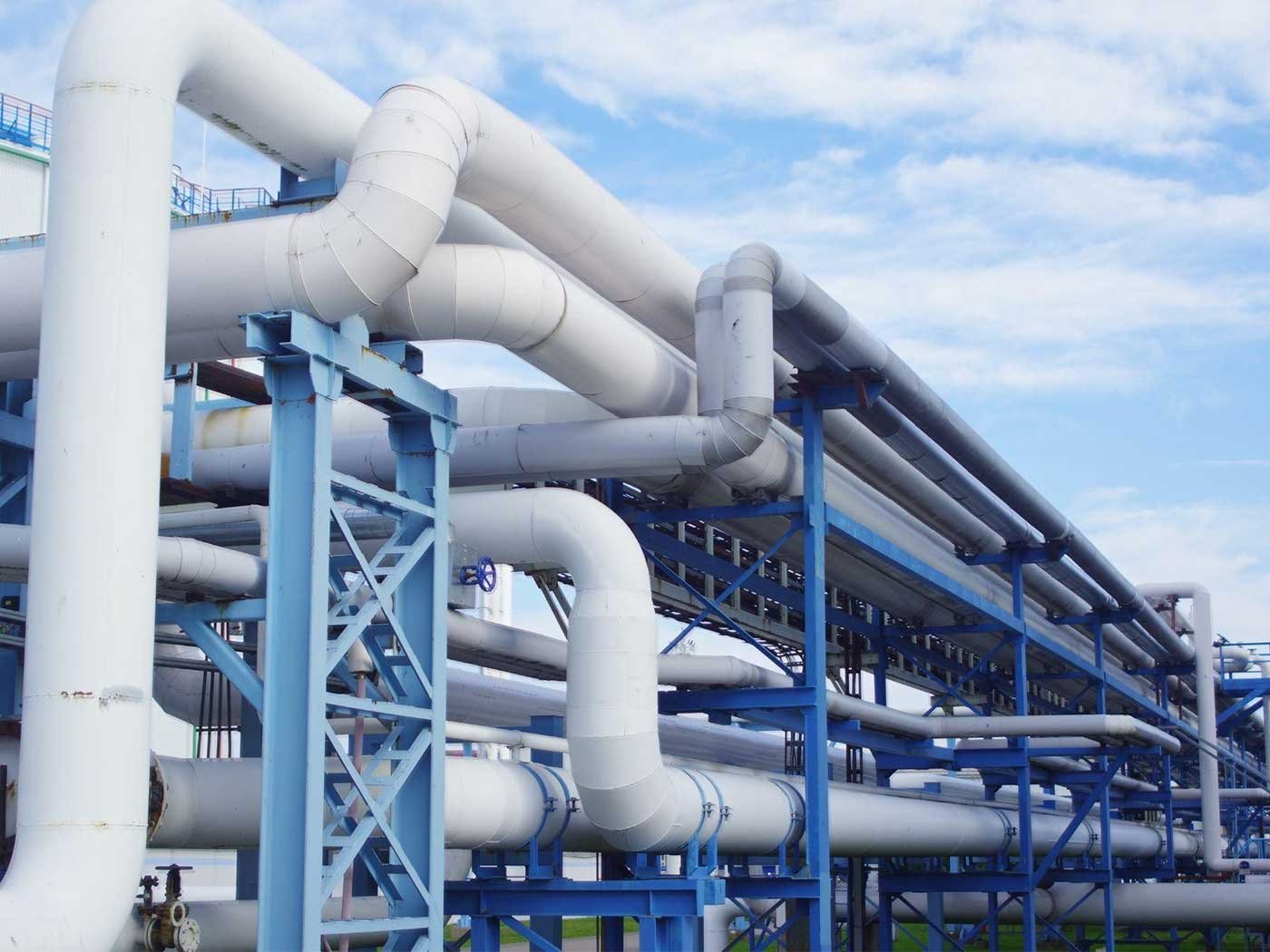
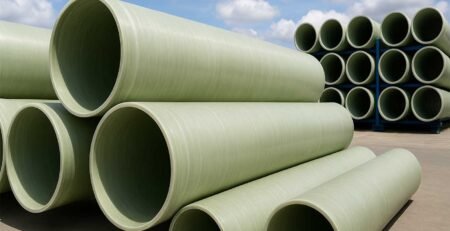
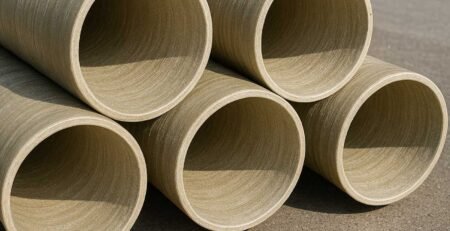
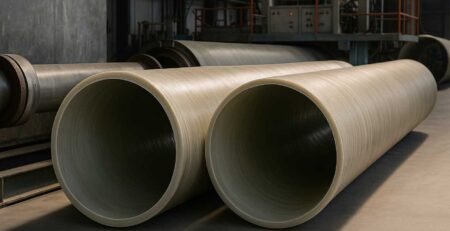
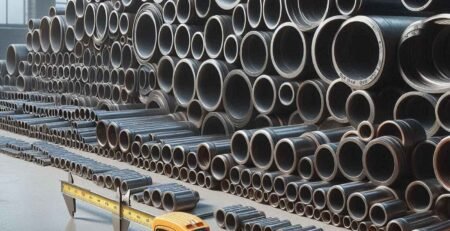
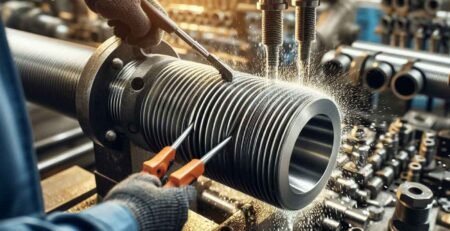
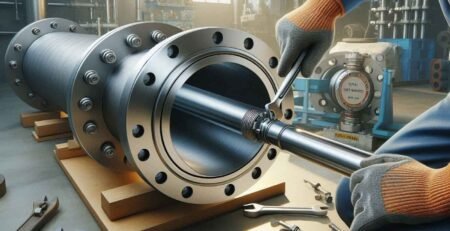

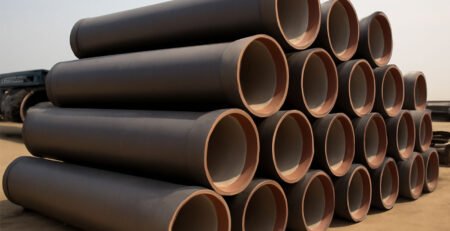
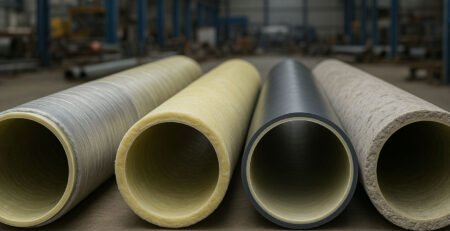
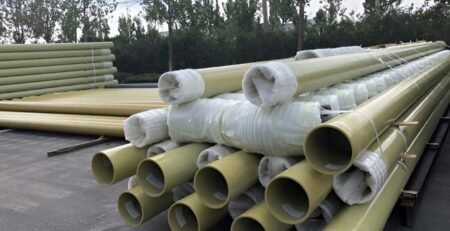
Leave a Reply